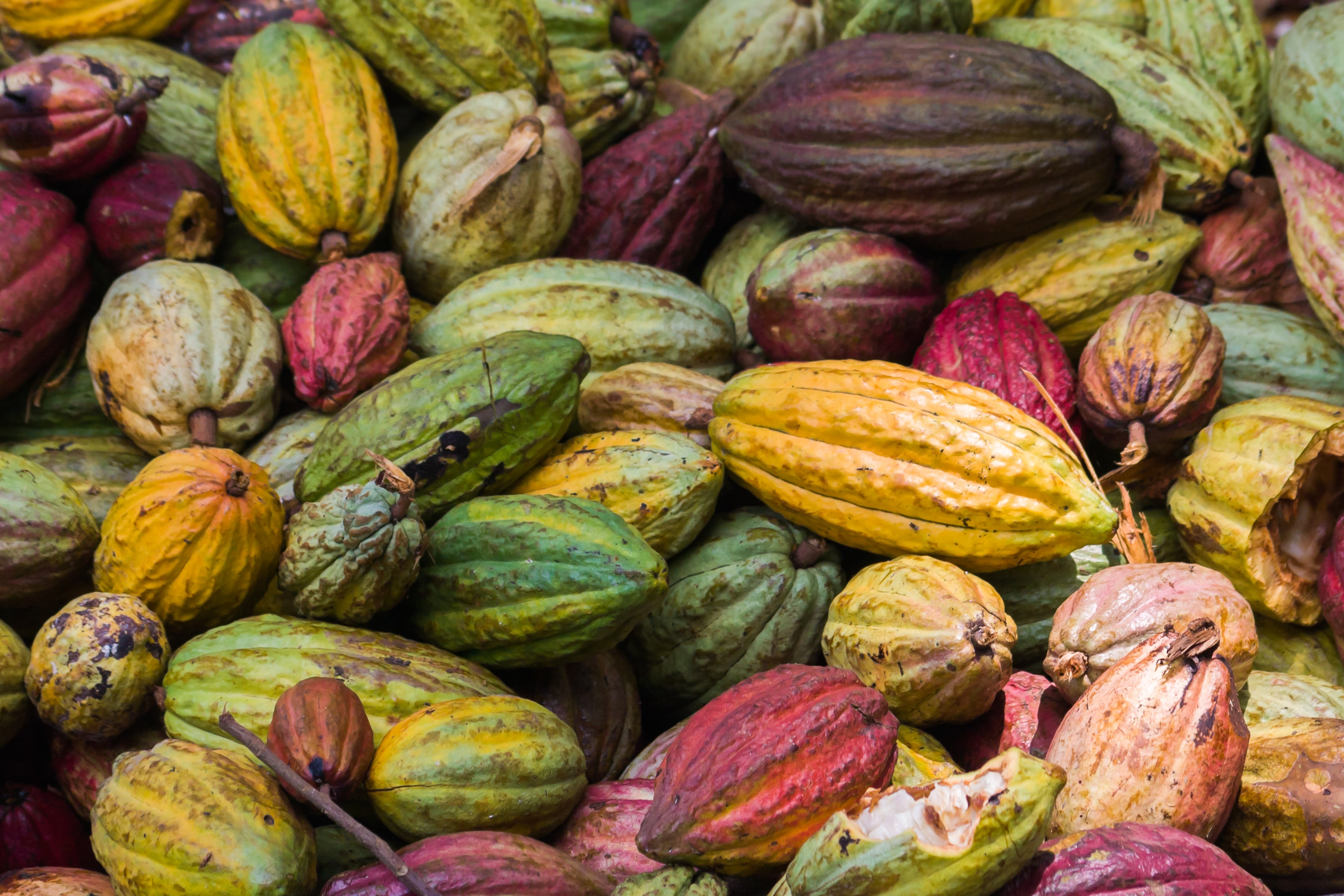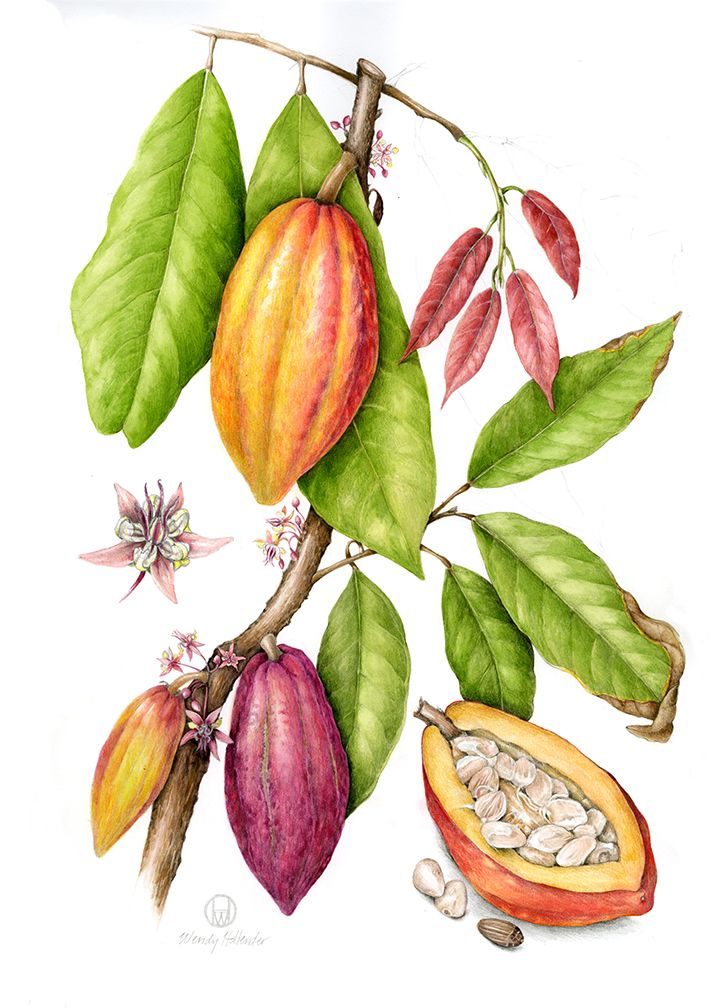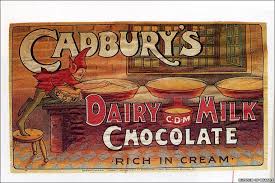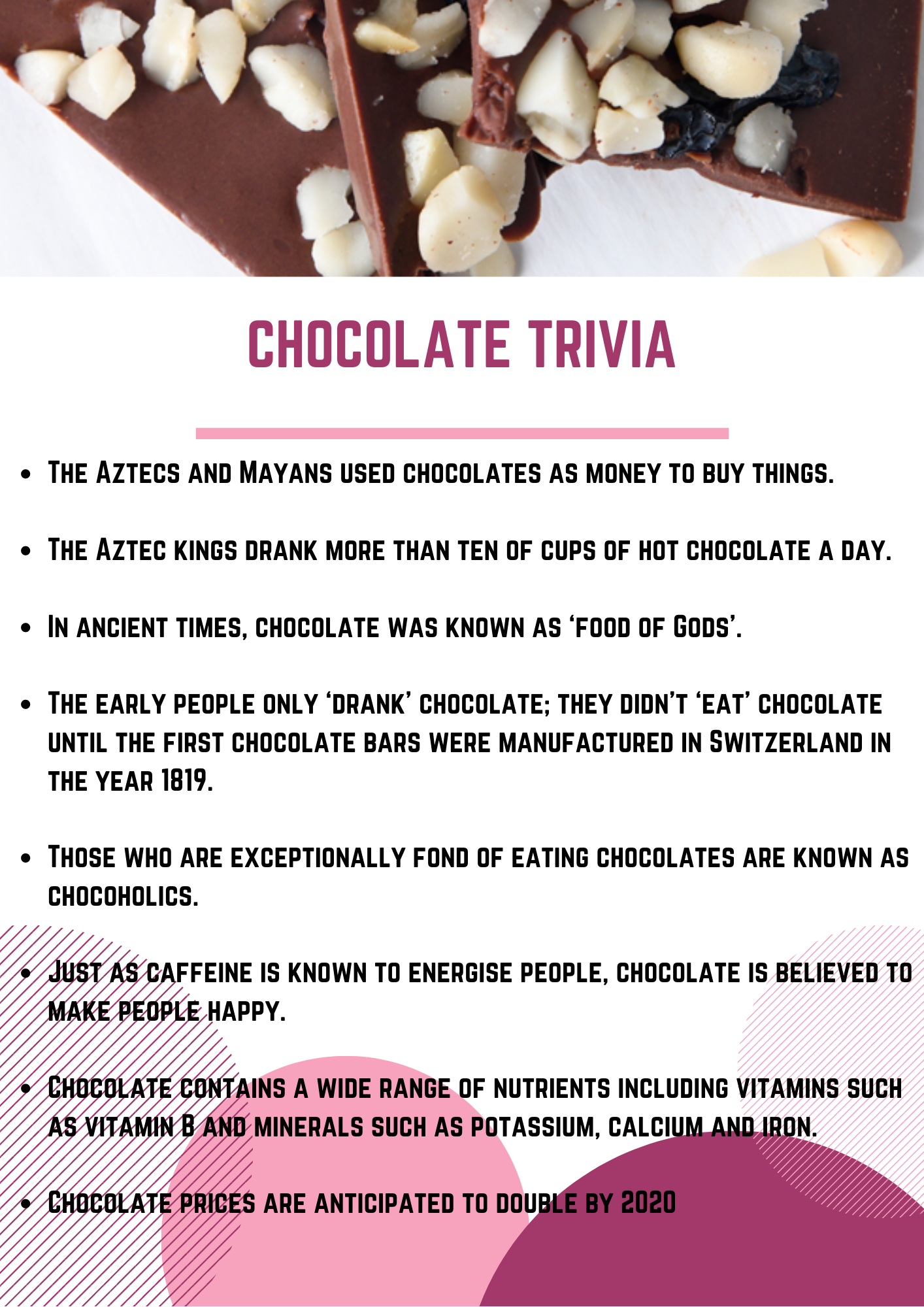Chocolate Story
Chocolate in Europe
The modern choclate bar
Chocolate trivia
Consumer and farmer issues

The chocolate story dates back almost 4,000 years to ancient Mesoamerica civilisations, including the Olmecs, Mayans, Incas and Aztecs. At first, chocolate was a drink. The Aztecs mixed crushed cocoa beans with seasonings, including chilies, to make a hot, spicy and frothy drink called ‘xocolatl’ (chocolatl) or ‘bitter water’
According to historians, explorer Christopher Columbus was the first European to taste cocoa. He discussed commercialising cocoa beans with the Spanish King and Queen, but met with little interest. So it was another Spanish explorer, Hernan Cortez (1475–1547), who put cocoa on the map. Visiting the Aztecs in Mexico, Cortez imbibed their royal drink chocolatl and took some beans to Spain. To make a more palatable drink he added cane sugar and soon the drink became a rage, especially amongst aristocrats. Cocoa needs a tropical climate, so the Spanish established plantations in Trinidad. Here they created a new cocoa variety ‘Trinitario’.

Botanical drawining of Theobroma cacao tree
The Spanish kept their cocoa plantations and royal drink a secret from other Europeans for almost a hundred years. Word got out via monks traveling from Germany to Austria and also through marriage of Louis X111 to Anne of Austria. Soon, other European countries started their own cacao industry.
In 1735, Swedish botanist Carl Linnaeus designated the tree ‘Theobroma cacao’. Theobroma, the genus name, is from Greek and translates to ‘food of the gods’. By the 17th century, chocolate was fashionable throughout Europe, becoming the most preferred beverage after tea and coffee. Some people believed it had nutritious, medicinal and aphrodisiac properties, but largely it remained a privilege of the rich.
In 1828, Dutch chemist Coenraad Van Houten, made powdered chocolate by removing about half the natural fat (cacao butter) from chocolate liquor, pulverising what remained and treating the mixture with alkaline salts to cut the bitter taste. His ‘Dutch cocoa’ and cocoa press technology led to production of powdered and solid chocolate.

Vintage Cadbury's Dairy Milk advert
Joseph Fry is credited with creating the first modern chocolate bar. In 1847, he discovered he could make a moldable chocolate paste by adding melted cacao butter into Dutch cocoa. The symbolic father of British Chocolate, however, is John Cadbury who marketed boxes of chocolate in England in 1868. Milk chocolate arrived later, created by Daniel Peter and Henri Nestle in Switzerland in 1875. In the late 1800s more chocolate companies emerged including Lindt and Suchard.
Milton S Hershey introduced Americans to chocolate, creating his first milk chocolate bar in Pennsylvania in 1900. Another American, Forrest Mars, son of candy maker Frank C Mars, created the first Mars bar in England in 1932. In the 20th century, the word ‘chocolate’ embraced a range of affordable treats, often with more sugar and additives than cacao and made from the hardiest but least flavourful bean variety, ‘Forastero’.

Consumers and farmers
Recently, consumers have shown interest in high quality, handmade chocolates and sustainable cacao farming and harvesting. Big corporations like Hershey’s purchased small artisanal chocolate makers such as Scharffen Berger and Dagoba. Cadbury has done likewise with Green and Black. Still, independent chocolatiers continue to thrive.
Chocolate consumption has never been higher. But many cocoa farmers are not sharing the rewards as they are impacted by:
- Climate Change
- Economic pressures
- Rising production costs: Increasing costs of fertilizer, transportation, and labor
- The low cocoa price paid to farmers
- Sustainability
- Cocoa production linked to deforestation in some regions.
- Child labor issue, particularly in Africa.
- The cocoa price paid to farmers can leave cocoa farmers struggling to earn a living.

Sophie D Coe & Michael D Coe, 'The True History of Chocolate'
Maricel E Presilla, 'The New Taste of Chocolate'
Deborah Cadbury, 'Chocolate Wars'
Orla Ryan, 'Chocolate Nations'
Megan Giller, 'Bean to Bar Chocolate'
